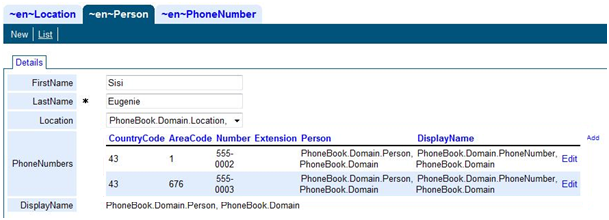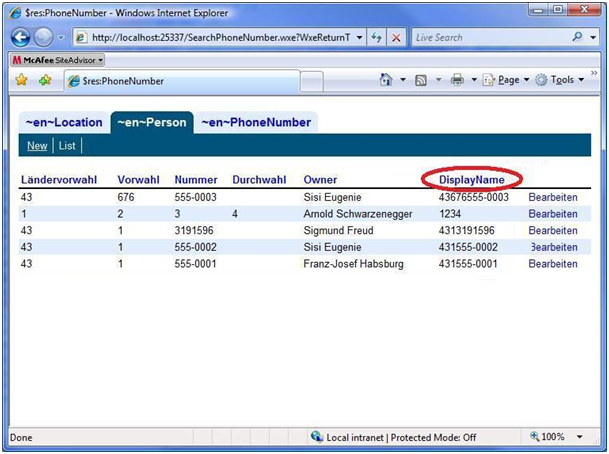
uigen.exe is a command line tool for generating a re-motion web application from domain object classes, as found in one or more domain object assemblys.
As the PhoneBook tutorial explains, a domain object class essentially is a set of properties (and attributes). Here is the sample Person class from the PhoneBook tutorial:
public class Person : BindableDomainObject
{
[StringProperty(MaximumLength=60)]
public virtual string FirstName { get; set; }
[StringProperty(MaximumLength=60, IsNullable=false)]
public virtual string Surname { get; set; }
public virtual Location Location { get; set; }
[DBBidirectionalRelation("Person", SortExpression="CountryCode, AreaCode, Number, Extension")]
public virtual ObjectList<PhoneNumber> PhoneNumbers { get; set; }
}
|
For managing such a person object in a web application, uigen.exe generates two types of forms:
Person object (an EditPersonForm.aspx)Person objects in the database (a SearchResultPersonForm.aspx)Here are illustrations for each.
EditPersonForm in the browser
SearchResultPersonForm in the browser
uigen.exe saves you a lot of work, but there is still room for improvement in the generated application. As you can see in the pictures:
DisplayName must be removed manuallyuigen.exe what strings you want for property identifiers like PhoneNumberre-motion web applications share a lot of code. For this reason, templates are expanded for each file in the resulting web application project (like
PhoneBook.Web). The resulting project is mirrored by the original template project, i.e. a directory tree with one template for each generated target file. The following tech-note is dedicated to the subject of how this mechanism works and how templates are expanded, and the elements of the (home-grown) template language: What uigen.exe does.